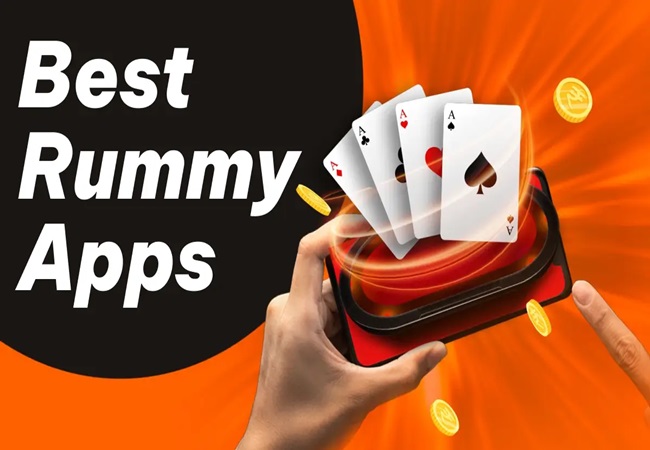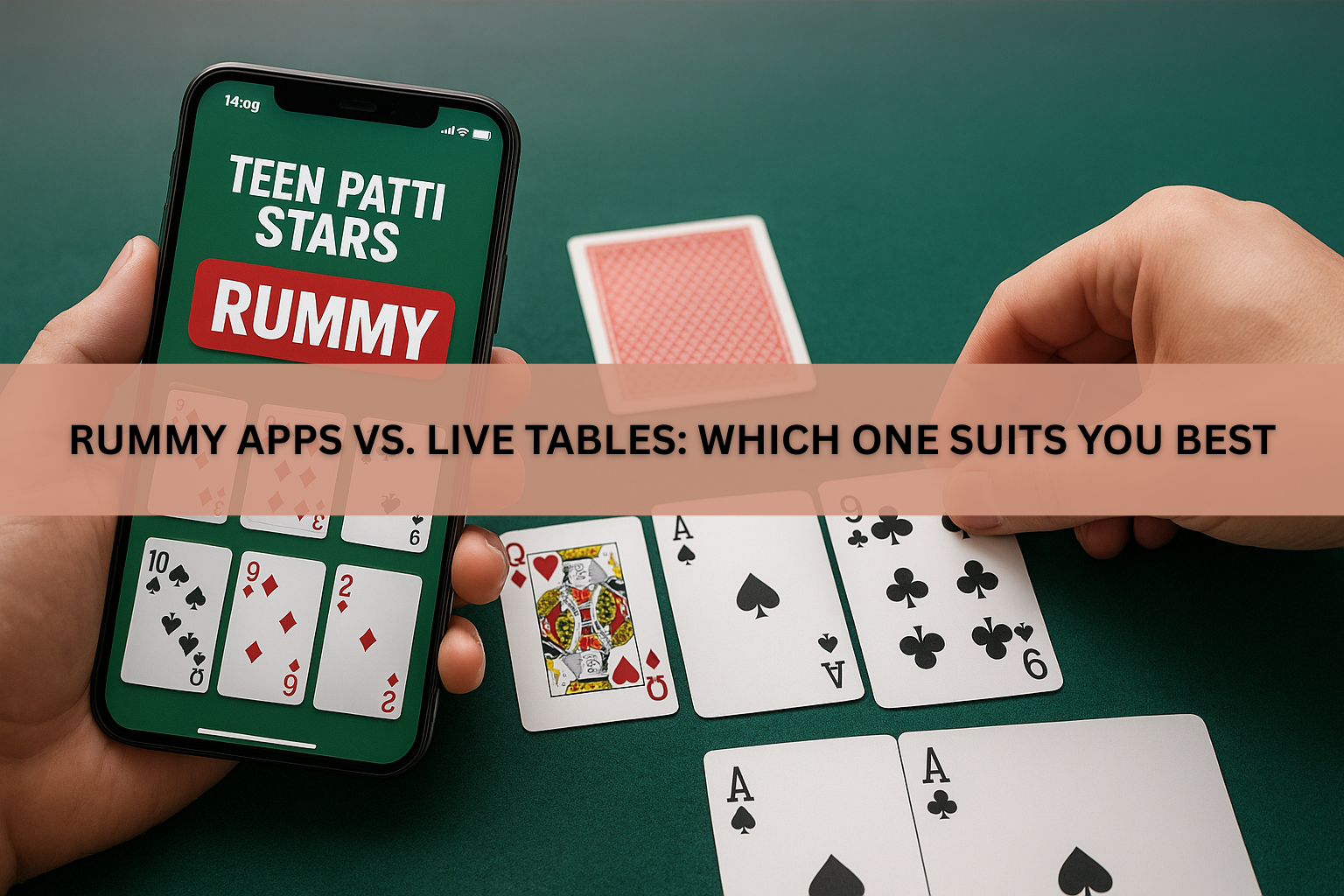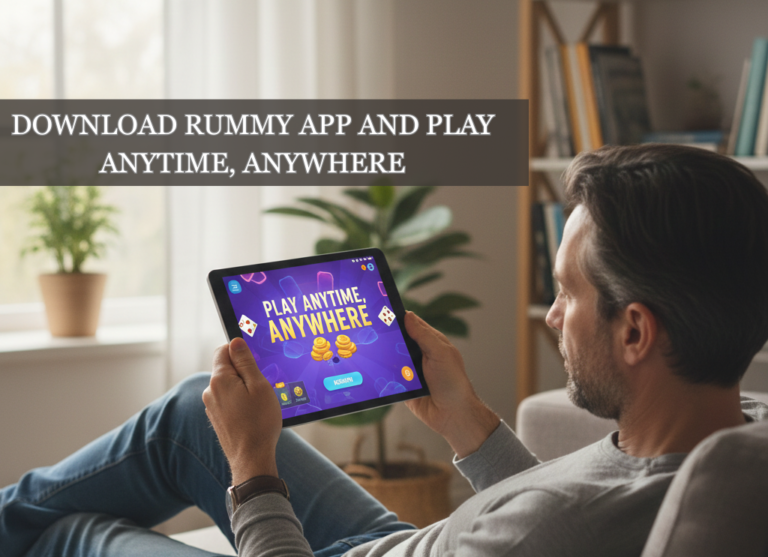Rummy Apps vs. Live Tables: Which One Suits You Best
Rummy has been one of the most beloved card games across generations, combining skill, strategy, and a bit of luck. With the digital revolution, the way people enjoy rummy has undergone a significant transformation. Today, players are no longer restricted to live tables with family and friends. Instead, they can enjoy the same thrill on rummy apps that connect them with players worldwide.
But here’s the question: which version suits you best—rummy game apps or live tables? To answer this, let’s break down the strengths and drawbacks of each, considering factors like convenience, social interaction, competitiveness, learning, and overall experience.

The Appeal of Live Rummy Tables
1. Social Connection
Live tables are traditionally associated with warmth and camaraderie. Whether it’s during festivals, family gatherings, or casual meetups with friends, rummy at a physical table is a shared experience. You can read facial expressions, engage in banter, and enjoy a game that’s as much about bonding as it is about strategy.
2. The Physical Element
Some players prefer handling real cards, shuffling decks, and placing their melds on the table. The tactile sensation and face-to-face competition add a layer of authenticity that apps cannot fully replicate.
3. Limited Distractions
When you’re at a live table, your attention is focused solely on the game and the people around you. Unlike on apps, where notifications, background noise, or multitasking might pull you away, a physical setup demands complete engagement.
4. House Rules and Variability
Live tables rummy often allows for creative “house rules,” making the game more personalized. For example, some families may tweak scoring systems or include fun penalties. This freedom adds charm but may not always align with official rules.
The Rise of Rummy Apps
1. Accessibility and Convenience
One of the biggest advantages of rummy apps like Teen Patti Stars is anytime, anywhere access. You don’t need a full group of friends or family to start a game. Whether you’re on your commute, relaxing at home, or waiting in a café, you can open an app and jump into a game instantly.
2. Global Competition
Rummy apps have expanded the playing field beyond living rooms and local communities. Players can now compete with opponents across the country or even the world. This exposes you to a variety of playing styles and strategies, sharpening your skills much faster than local games.
3. Learning Opportunities
Most apps come with tutorials, practice modes, and AI opponents. New players can learn at their own pace, making apps beginner-friendly. For experienced players, apps often provide advanced challenges, tournaments, and leaderboards.
4. Rewards and Incentives
Rummy apps frequently offer bonuses, loyalty points, referral rewards, and even real-money tournaments. These incentives add extra motivation to play and win. While live tables may involve betting chips or money among friends, the structured rewards in apps create a more competitive ecosystem.
5. Variants and Options
Apps typically include multiple rummy formats—Points Rummy, Pool Rummy, Deals Rummy, and sometimes regional variants. Switching between formats is quick and seamless on mobile apps, something not always possible in live gatherings.

Comparing the Two
Now, let’s look at the head-to-head comparison:
| Aspect | Rummy Apps | Live Tables |
| Convenience | Play anytime, anywhere, with instant matchmaking. | Requires gathering players physically, a time-consuming setup. |
| Competition | Global, diverse skill levels, structured tournaments. | Limited to local circles, often casual in nature. |
| Learning Curve | Tutorials, AI practice, and structured guidance. | Learn through observation and trial-and-error with peers. |
| Social Interaction | Virtual chats, emojis, and online communities, but less personal. | Face-to-face conversations, banter, and deeper bonding. |
| Variety | Multiple variants, quick switching, frequent updates. | Usually limited to one or two familiar formats. |
| Rewards | Cash prizes, bonuses, and digital leaderboards. | Informal rewards like bragging rights or small bets. |
| Experience | Fast-paced, structured, and technology-driven. | Slow-paced, traditional, and tactile. |
Which One Suits You Best?
1. If You’re a Social Butterfly
If you value connection over competition, live tables may be your go-to choice. Playing with friends or family adds emotional richness to the game. The laughter, arguments, and casual nature of live rummy can’t always be replaced by digital screens.
2. If You’re Competitive and Ambitious
Players who thrive on challenges and global competition will find rummy apps more rewarding. Apps allow you to test yourself against skilled opponents worldwide and improve rapidly through diverse encounters.
3. If You’re a Beginner
Online Rummy apps are ideal for those just starting out. Tutorials, practice tables, and low-stake games offer a safe environment to learn without the pressure of live scrutiny.
4. If You’re Time-Constrained
For professionals and students juggling busy schedules, rummy apps provide unmatched flexibility. A quick game during a coffee break is more practical than organizing a live session.
5. If You Love Tradition
There’s a nostalgic charm to gathering around a table, shuffling cards, and enjoying the physicality of the game. For those who cherish cultural traditions, festivals, and personal interaction, live rummy wins hands down.
The Hybrid Approach
Interestingly, many players don’t feel the need to choose one over the other. Instead, they embrace a hybrid approach—playing live rummy during family gatherings or festive seasons and using best apps for practice, convenience, and competition in daily life. This combination ensures the best of both worlds: emotional bonding and skill growth.
The Future of Rummy
With advancements in technology, the line between apps and live tables may blur further. Virtual reality (VR) and augmented reality (AR) innovations could make digital rummy feel more like a physical table experience, complete with 3D avatars, interactive gestures, and immersive settings. Imagine sitting in a virtual living room with friends across the globe, playing rummy as though you were physically together.
Final Thoughts: Rummy: Apps vs Live Tables
So, rummy apps vs. live tables—which one suits you best?
The answer lies in what you value most. If you’re looking for connection, tradition, and nostalgia, live tables remain unmatched. But if your priority is convenience, competition, and skill development, rummy apps take the crown.
Ultimately, you don’t have to limit yourself to one format. Balance both experiences and tournaments according to your mood, schedule, and goals. After all, whether on a screen or around a table, the essence of rummy remains the same: strategy, skill, and the joy of playing a timeless game.

5 FAQ’s: Rummy Apps vs. Live Tables: Choose Your Style
1. What’s the difference between rummy apps and live tables?
Apps give you convenience and rewards, while live tables bring social fun and tradition.
2. Which is better for beginners?
Rummy apps—thanks to tutorials, practice tables, and AI opponents.
3. Do rummy apps replace social interaction?
Not fully. Apps have chats and emojis, but live tables offer real bonding.
4. Can I win rewards on rummy apps?
Yes! Many apps offer bonuses and cash tournaments, unlike casual live games.
5. Do I have to pick one?
No—you can enjoy both! Play apps for practice and live tables for connection.







